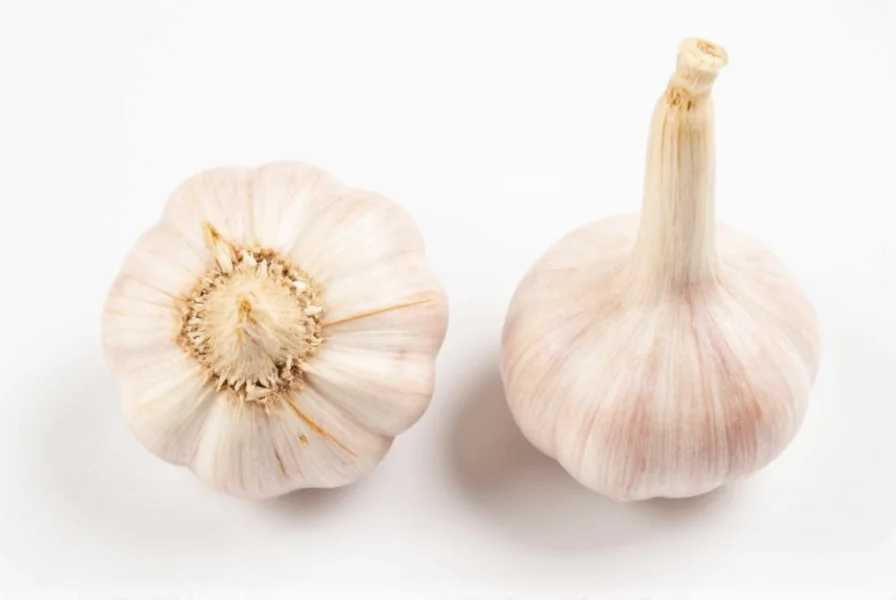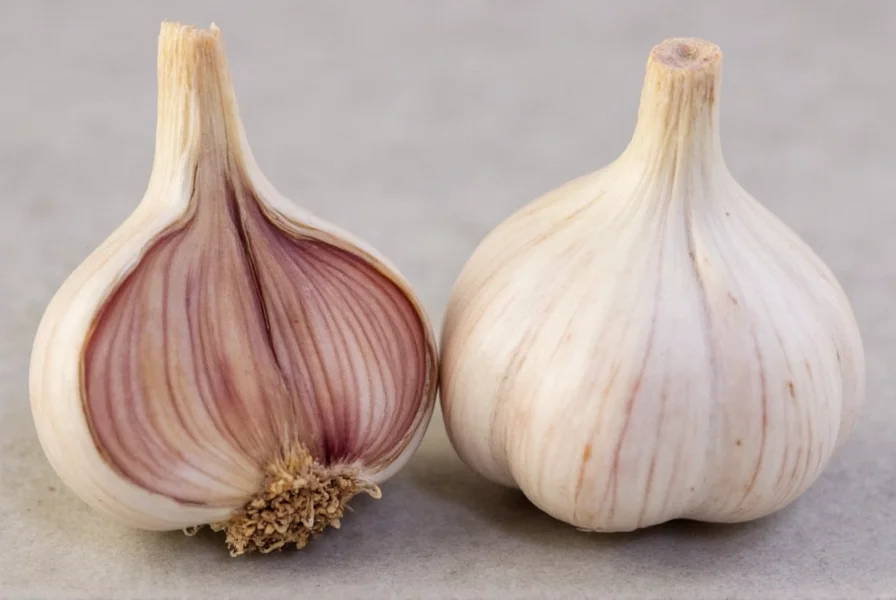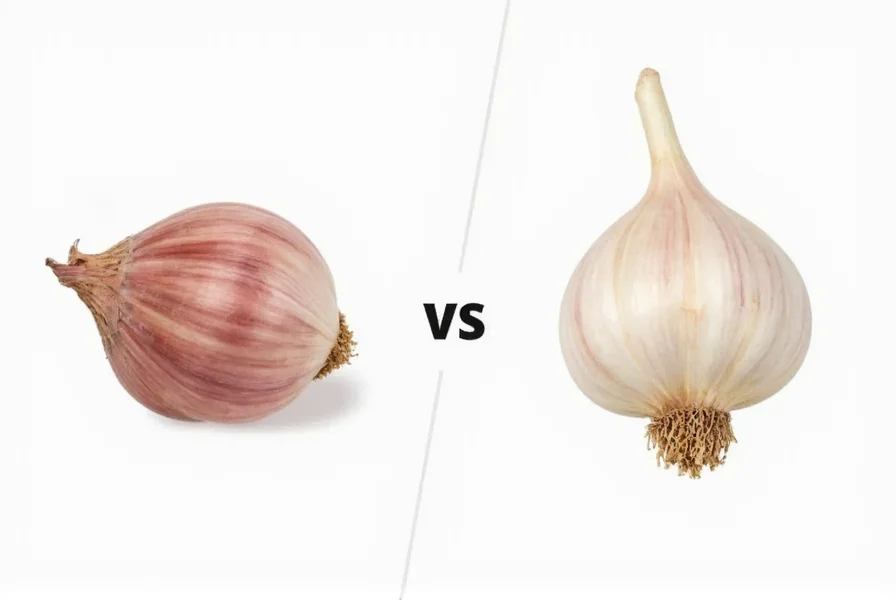When following recipes or shopping for ingredients, confusion between garlic cloves and bulbs can lead to significant cooking errors. Many home cooks mistakenly use “bulb” and “clove” interchangeably, not realizing these terms describe completely different parts of the garlic plant with distinct culinary applications.
What Exactly Is a Garlic Bulb?
The garlic bulb, commonly called a “head of garlic,” represents the complete garlic structure you purchase at grocery stores. This bulb functions as the plant's storage organ, containing multiple cloves arranged in concentric layers around a central stem. Most supermarket garlic bulbs contain between 10-20 cloves, though this number varies by garlic variety and growing conditions.
Gardeners and botanists classify garlic (Allium sativum) as a bulb vegetable, where the entire structure develops underground. The bulb's outer layers consist of dry, papery skin that protects the individual cloves from moisture loss and physical damage. This protective layer also helps determine freshness—tight, dry skin indicates recent harvest while loose or peeling skin suggests aging.
Understanding the Individual Garlic Clove
Each segment within the garlic bulb constitutes a single clove. These individual units feature their own protective skin layer and represent the plant's reproductive structures. When separated from the bulb, cloves can be planted to grow new garlic plants or used in cooking.
Culinary professionals emphasize that clove size varies dramatically even within the same bulb. A single large clove might equal three smaller cloves in volume, which explains why recipes specifying “one clove” can produce inconsistent results. For precise measurements, many chefs recommend weighing cloves (one average clove weighs 3-7 grams) or using minced garlic equivalents (1 clove ≈ 1 1/2 teaspoons minced).
| Characteristic | Garlic Bulb | Garlic Clove |
|---|---|---|
| Definition | Complete head containing multiple cloves | Individual segment within the bulb |
| Typical Count | 1 unit (containing 10-20 cloves) | 10-20 per bulb |
| Culinary Measurement | Rarely used in recipes | Standard recipe measurement unit |
| Storage Life | 3-6 months when stored properly | 7-10 days after separation |
| Botanical Function | Complete storage organ | Individual reproductive unit |
Practical Implications for Cooking
Understanding the difference between garlic bulb vs clove measurements prevents common kitchen mistakes. When a recipe calls for “two cloves of garlic,” it refers to individual segments, not entire bulbs. Using a whole bulb instead of two cloves would introduce 5-10 times more garlic than intended, potentially overwhelming the dish.
Chefs preparing aioli, marinades, or sauces often specify “minced garlic from one bulb” when they require intense garlic flavor throughout. For subtle background notes, recipes typically call for “one or two cloves.” The distinction becomes particularly important in delicate dishes like fish preparations or light sauces where garlic balance is critical.
When substituting jarred minced garlic for fresh, remember that processing affects potency. Most culinary experts recommend using 1/2 teaspoon of jarred product per fresh clove, as the preservation process concentrates flavors while diminishing some aromatic compounds.
Common Misconceptions About Garlic Terminology
Many cooking resources perpetuate the myth that “globe” and “bulb” are interchangeable terms for garlic. In botanical terms, “globe” refers to round-shaped vegetables like onions, while garlic specifically forms bulbs. This terminology confusion often leads to measurement errors in international recipes.
Another widespread misconception involves garlic sprouts. Many home cooks discard green sprouts emerging from cloves, believing them toxic. While these sprouts can impart a slightly bitter taste, they're perfectly edible and indicate the garlic is actively growing—a sign of freshness rather than spoilage.

Proper Storage Techniques for Maximum Freshness
Understanding garlic clove vs bulb storage requirements preserves flavor and prevents premature sprouting. Whole bulbs maintain quality for 3-6 months when stored in cool (60-65°F), dark, well-ventilated spaces. Never refrigerate intact bulbs, as humidity triggers sprouting.
Once separated, individual cloves deteriorate faster. Store peeled cloves in olive oil in the refrigerator for up to 10 days, or freeze whole unpeeled cloves for up to 6 months. For frequent cooking, many chefs recommend keeping a small container of peeled cloves in the refrigerator—though this reduces shelf life to one week.
When selecting garlic bulbs, look for firm heads with tight skin and no soft spots. Avoid bulbs showing green sprouts unless you plan immediate use, as sprouting depletes the clove's flavor compounds. Larger bulbs typically contain more cloves but don't necessarily indicate stronger flavor—garlic intensity depends more on variety and growing conditions than size.

Conclusion: Mastering Garlic Terminology for Better Cooking
Recognizing the distinction between a garlic bulb and individual cloves transforms your cooking precision. This knowledge prevents recipe disasters while helping you select, store, and prepare garlic more effectively. Whether you're a beginner cook or experienced chef, understanding garlic anatomy ensures consistent results in every dish.
Frequently Asked Questions
How many cloves are typically in one garlic bulb?
Most standard grocery store garlic bulbs contain 10-20 individual cloves, though this varies by variety. Elephant garlic (actually a leek relative) produces fewer but much larger cloves, while some heirloom varieties may contain up to 30 smaller cloves per bulb.
Can I substitute garlic powder for fresh cloves in recipes?
Yes, but with important considerations. As a general rule, 1/8 teaspoon garlic powder equals one fresh clove. Remember that powder lacks the moisture and enzymatic compounds of fresh garlic, producing a different flavor profile. For best results, reconstitute powder with a small amount of water before adding to dishes.
Why do some garlic cloves taste stronger than others?
Garlic intensity varies based on multiple factors: younger garlic tends to be milder, while stressed plants (from drought or poor soil) produce more pungent cloves. The compound allicin, responsible for garlic's characteristic flavor, develops when cells are damaged. Larger cloves often contain more allicin potential, but proper preparation technique significantly affects final flavor intensity.
Does roasting garlic change the difference between bulb and clove measurements?
Roasting transforms garlic's chemistry, converting sharp compounds into sweet, caramelized flavors. When roasting whole bulbs, the measurement remains the same (one bulb equals multiple cloves), but the flavor concentration changes dramatically. A roasted bulb yields approximately 2-3 tablespoons of softened garlic, equivalent to the combined volume of all its cloves after cooking.
How can I tell if my garlic has gone bad?
Signs of spoiled garlic include soft or mushy spots, dark yellow or brown discoloration, visible mold, or a sour smell. Individual cloves that feel light for their size have likely dried out. While green sprouts inside cloves aren't dangerous, they indicate aging garlic that may have diminished flavor. Properly stored bulbs should feel heavy and firm with tight, dry skin.











 浙公网安备
33010002000092号
浙公网安备
33010002000092号 浙B2-20120091-4
浙B2-20120091-4